
If one wishes to study the Scriptures, one of the most important things that he must do is to acquire a good translation of the text, unless he just happens to know Biblical Hebrew, and Koine Greek. Especially nowadays, when it seems there is a new translation or study Bible that is published each year, it is not a simple choice to make.
There are several factors that must be taken into consideration:
1) How accurate is the translation?
2) What text is the translation based upon?
3) What is the theological perspective that underlies the translation?
4) How well done and how liturgically useful is the translation?
5) More recently, you must also add to the above considerations, how politically correct is the translation?
1. Formal Equivalence, Dynamic Equivalence, Paraphrase
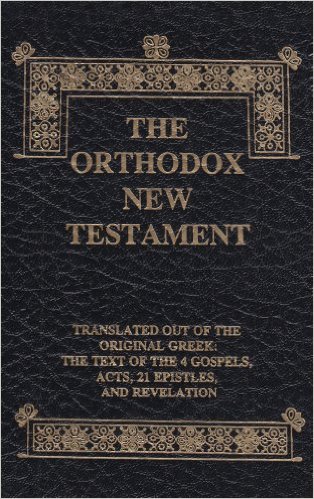
On the opposite extreme, you have paraphrases, such as the Living Bible which has readings such as “"God even protects him from accidents,” rather than the more familiar (and more accurate) "He keepeth all His bones: not one of them is broken" (34:20 KJV). Another popular translation that is more of a paraphrase (though not as bad as the Living Bible) is the Good News Translation.
The New International Version (NIV), is an example of a “dynamic equivalence” translation. The theory is that instead of translating the text word for word, you translate it “thought for thought.” The problem is that when a translator does this he has moved beyond translating the text and into the realm of commentary on the text, because when you translate the thought, you are assuming the interpretation. Many points seem very clear in the NIV that simply are not based on what the text actually says, but rather on what the translators think it means. An example of how this distorts the text is to be found in how the NIV translates 2 Thessalonians 2:15:
So then, brothers, stand firm and hold to the teachings we passed on to you, whether by word of mouth or by letter.
Compare that with the more accurate reading found in the King James Version:
Therefore, brethren, stand fast, and hold the traditions which ye have been taught, whether by word, or our epistle.
As Clark Carlton notes:
The NIV translators, however, have effected what amounts to a literary sleight of hand. One would be tempted to call it a rather nifty move were it not for the fact that they have tampered with the written Word of God. Hold the traditions which ye have been taught. Traditions (paradoseis) is a noun in the objective case. It is derived from the verb to hand over (paradidomi). The phrase, which ye have been taught (edidachthate), is a form of to teach (didasko). The NIV turns the verb into the noun—hold to the teachings—and turns the noun into the verb—we passed on to you. If we were to translate the NIV translation back into Greek, instead of paradoseis, we would have didaskalias, and instead of edidachthate we would have paredothate.”[1]
Another example is the way the NIV translates the Greek word sarx as “sinful nature” sometimes, and simply as “body” other times. The problem is that the word means “flesh” and it only implies a sinful nature at times, but the problem is that it is not always clear whether or not this is in fact implied, but if you are reading the NIV, you wouldn’t know that there was any ambiguity, because the translators have misled you into thinking that text clearly says things that are not so clear.
Other examples of “Dynamic Equivalence” translations are the New American Bible (NAB), the New Jerusalem Bible (NJB), Today’s NIV (TNIV), the New English Bible (NEB), and the Revised English Bible (REB).
 James I of England, who commissioned the Bible named after him.
James I of England, who commissioned the Bible named after him.
2. The Text Behind the Text
I will address the question of the original text of the Greek New Testament in more detail in a subsequent article, but will touch upon the subject here briefly, as well as the question of the original text of the Old Testament. In short, there are the two versions of the Old Testament text that the Orthodox Church considers authoritative, and one of the New Testament.
A. The Old Testament Text
For the Old Testament, the two textual traditions that the Church has preserved are that of the Greek Septuagint and the Syriac Peshitta. The Latin Vulgate played an important role in the pre-schism western Church, and so it too is a translation worthy of consultation. The Orthodox Church is of course well aware of the fact that most of the Old Testament books were written in Hebrew and Aramaic (the Deuterocanonical books having mostly been written in Greek), however, the Hebrew text that we have today is not the same text that existed during the Old Testament period or at the time of Christ. This is seen in the Dead Sea Scrolls, as well as in the Septuagint, Peshitta, and Latin Vulgate which were all translated from the Hebrew, and yet reflect a Hebrew original that often differs from that which we have today.
The Hebrew Text that has served as the basis for most translations of the Old Testament into English is based almost entirely on the Leningrad Codex, which dates from 1008 A.D. In comparison to the textual evidence that we have for the New Testament Greek text, this is a very late manuscript. It is an example of the Masoretic recension which is usually dated to have been shaped between the 6th and 10th centuries A.D. This is well after the Septuagint was translated (3rd century before Christ), the Peshitta (1st and 2nd Centuries A.D.), or the Vulgate (4th Century A.D.). According to Christian tradition, the non-Christian Jews began making changes in the Old Testament text to undercut the Christian use of Old Testament prophecies concerning the coming of Christ. In any case, the Hebrew Text that we now have was preserved outside the Church. The Septuagint and Peshitta texts were preserved within the Church, and so the Church believes that the text of the Old Testament was been authoritatively preserved in these textual traditions.
Furthermore, it is clear that the text that Christ and the Apostles used matches the Septuagint rather than the Masoretic text. For example, in Acts 7:43 the Protomartyr Stephen quotes from the book of Amos as follows:
Yea, ye took up the tabernacle of Moloch, and the star of your god Remphan, figures which ye made to worship them (KJV).
But when you look this quote up in Amos 5:26 in most translations, you will find that the quotation doesn’t match:
You also carried Sikkuth your king and Chiun, your idols, the star of your gods, which you made for yourselves. (NKJV).
Compare the above with the Latin Vulgate:
But you carried a tabernacle for your Moloch, and the image of your idols, the star of your god, which you made to yourselves (Douay-Rheims translation of the Vulgate).
And then with the Septuagint:
Yea, ye took up the tabernacle of Moloch, and the star of your god Raephan, the images of them which ye made for yourselves (Sir Lancelot Brenton translation of the Septuagint).
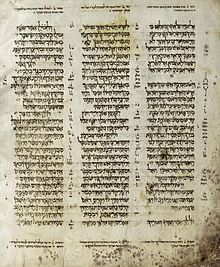
Another example of a clearly corrupt reading in the Masoretic text is 1 Samuel 14:41 which reads as follows:
Therefore Saul said unto the LORD God of Israel, "Give Thummim." And Saul and Jonathan were taken: but the people escaped.
Several modern translations correct this clearly erroneous text based on the Septuagint and Vulgate to read:
Therefore Saul said, "O LORD God of Israel, why have you not answered your servant this day? If this guilt is in me or in Jonathan my son, O LORD, God of Israel, give Urim. But if this guilt is in your people Israel, give Thummim." And Jonathan and Saul were taken, but the people escaped.
The Masoretic text simply makes no sense, and obviously at some point a scribe skipped an entire line or two of the text. This is obvious because of the reference to the Urim and Thummim, which were two objects used by the priest of the Old Testament for discerning the will of God on matters such as that described in 1 Samuel 14.
Another example is the text quoted in Hebrews 1:6 (And let all the angels of God worship him) which is nowhere to be found in the Masoretic text, but is found in both the Septuagint and the Dead Sea Scrolls Hebrew text in Deuteronomy 32:43.
It should be pointed out that the Hebrew text should not be ignored entirely. Particularly when the Septuagint and the Hebrew text are in agreement, we will better understand the Septuagint as a translation if we compare it with the Hebrew text that it is clearly a translation of. It is extremely helpful to understand the range of meaning of the original Hebrew text (when we clearly have it). For example, it is helpful to know that Hebrew does not have a past or future tense, but only a perfect and imperfect tense … and so just because an English translation is clearly in either the past, present, or future tense, it does not necessarily mean that this is what is implied by the Hebrew original. One often encounters the use of the “prophetic perfect,” where a prophecy of something that has not yet come to pass is in the perfect tense, and so is often translated with the English past tense, e.g. … with His stripes, we were healed (Isaiah 53:5), when from the perspective of the prophet, he was speaking of something in the future.
There are at present only limited options available in terms of English translations of the Septuagint. There is the translation of Sir Lancelot Brenton, which is often awkward and wooden. There is also a very well done revision of the KJV by Michael Asser, which corrected the KJV based on the Septuagint, but while the complete text is available online, only the Psalter is actually in print. For the Psalms there is the Psalter According to the Seventy, published by Holy Transfiguration Monastery; A Psalter For Prayer, published by Holy Trinity Monastery; and the Psalter of the Prophet and King David, published by the Center for Traditionalists Orthodox Studies—this text is based on the edition by Michael Asser, but it differs in some respects. There are also various editions of the Old Testament readings that are used liturgically.
The New English Translation of the Septuagint is a “scholarly” translation that I think is worth having on hand for reference, but the translation is seriously flawed—both in terms of style and substance. Stylistically, the use of mostly unfamiliar transliterations for the names of people and places from the Greek make this text very awkward and practically unusable by the average layman. For example, you will search in vain in a Bible dictionary for Heua, Kain, Habel, Saoul, Dauid, or Nabouchodonosor—while the names of Eve, Cain, Abel, Saul, David, and even Nebuchadnezzar are generally familiar. The argument that using the standard forms of these names would be less than a faithful translation of the Greek is belied by the fact that translations of the New Testament are also from Greek, and yet we do not generally find the names “Iesous Christos,” “Petros,” “Paulos,” or “Iakovos,” but we do generally see the standard forms of the names found in the King James Version which have been the standard in English for four centuries. And in terms of substance, the text is far worse. For example, contrary to two thousand years of reading this text in the context of the Christian Tradition, they translate Genesis 1:2 as saying that a divine wind was being carried along over the water. That is a plainly heretical translation of the text. You also find a tendency towards gender neutral language to the point that significant distortions of the meaning of the text take place, such as Genesis 3:15, in which the seed of the woman becomes simply the offspring despite the fact that the Greek reads spermastos, and one does not have to be a Greek scholar to understand that this does not simply mean offspring.
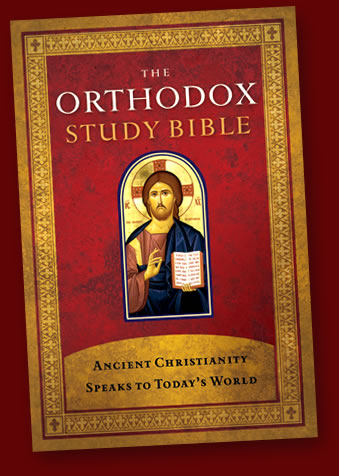
There are also some translations based on the Latin Vulgate that are closer to the Septuagint text than are texts based on the Masoretic Hebrew Text. The Douay-Rheims version is a translation of the complete text of the Vulgate, and the Coverdale Psalter, which is found in the older editions of the Book of Common Prayer, is also translated from the Vulgate.
B. The New Testament Text
I will address this issue in far greater detail in a future article (“New Testament Textual Criticism and the Ending of Mark”), but suffice it to say here that there are essentially two versions of the Greek New Testament that form the basis of the various translations we have in English. There is the traditional text, which is variously referred to as the “Received Text,” the “Textus Receptus,” the “Byzantine Text,” and the “Majority Text.” Then there is the revised text, which is based on the textual theory of Wescott-Hort, and is currently to be found in either the Nestle-Aland edition, or the United Bible Societies edition.
The traditional text of the Greek New Testament is the text that the Church has actually used and preserved for the past 2,000 years, and is to be found in the vast majority of Greek manuscripts, and is reflected in the vast majority of ancient translations of the New Testament—which in some cases originate from the time of the Apostles. The critical editions are based primarily on a small number of manuscripts from Egypt, the earliest of which date from the mid-fourth century, as well as some of the papyri that likewise come from Egypt, some of which are dated as early as the second or third century.
The supporting premises of the theory that is behind the critical editions of the Greek New Testament have largely been shot to pieces by subsequent scholarship, but nevertheless, the theory remains the dominate approach to New Testament textual criticism because nothing has come along to replace it that has satisfied the majority of Protestant scholars.[2] Consequently, almost all modern translations of the New Testament are based on the critical editions of the Greek New Testament rather than the traditional text. The exceptions are of course the King James Version (along with various revised editions of the King James which are not really new translations but simply attempts to update the English of the KJV), the New King James Version (which really is a new Translation, although it makes an attempt to maintain some continuity with the original King James Version), the Douay-Rheims, and a few other minor translations that are not in common use.
But are the differences between these two versions of the Greek New Testament significant? I have often answered this question by asking the proud owner of a translation based on the revised Greek text to look up John 5:4 and read it to me. It is always fun to watch as they discover that their Bible skips from verse 3 to verse 5. If you read this passage in context, removing verse 4 makes it entirely unclear what the paralytic is doing by the pool of Bethesda to begin with. Had the editors of the revised versions the guts to do it, you would also not find Father, forgive them for they know not what they do (Luke 23:43), or the story of the woman caught in adultery (John 7:53-8:11), but since they dared not remove those texts, you simply find them in brackets, with footnotes that tell you that “the earliest and most reliable manuscripts” do not contain them. In fact, if we accepted the assumptions of the revised Greek text, when the third Matins Gospel Mark 16:9-20 is appointed, the priest would just have to whistle Dixie, because there would be no third Matins Gospel.
3. The Theological Perspective of the Translators
Every translator has a theological point of view that influences their translation either for good or for ill. Ideally, we would be using translations done by Orthodox scholars whose work had the sanction of the Church, but unfortunately no such translation has yet been produced. Consequently, until we have such a text in hand, we have to find the best options among Protestant and Roman Catholic translations. Even when dealing with the best examples of these translations, we need to be aware of the theological views of the translators, and keep an eye out for when their erroneous views may have negatively influenced the accuracy of their translation.
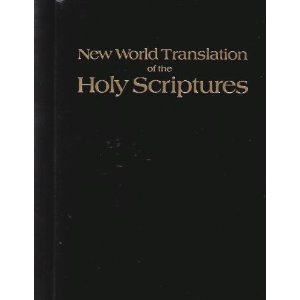
Most other examples of the way bad theology has impacted a translation are far less obvious, but no less real. We have already cited an example of how the NIV twisted 2 Thessalonians 2:15 in order to wring out of the text a translation that was more favorable to the conservative Evangelical Protestant leanings of its translators.
Another example, from the opposite side of the Protestant spectrum is the Revised Standard Version (RSV). Unlike the New World Translation, the Revised Standard Version is the work of qualified and respected scholars (as is the case with most of the translations commonly in use today), and there are not any examples that I am aware of in which one could question the honesty of the translators. One can however question the theology of these translators.
The translators of the RSV were without question on the more liberal side of the Protestant spectrum[4] and even included among their number a non-Christian Jewish scholar.[5] The best known example of how the theological perspective of these translators influenced the text is in how they translated Isaiah 7:14:
Therefore the Lord himself will give you a sign. Behold, a young woman shall conceive and bear a son, and shall call his name Imman'u-el.
This translation marks a complete departure from two thousand years of Christian tradition of translation, and is even a departure from the pre-Christian Jewish tradition that translated the Hebrew word “almah” as “parthenos” in the Greek Septuagint, and there is no debating that “parthenos” means “virgin.” Certainly, after the Christians came along and applied this prophecy to Christ the non-Christian Jews developed the polemic that “almah” was not the precise word for “a virgin” and that it could simply mean “a young woman.” Since there are scholars that accept this argument, one cannot accuse the translators of the RSV of being charlatans for choosing to translate the word in this way. One can however accuse them of departing from the Christian tradition on this question. Furthermore, there are compelling linguistic arguments in favor of the traditional translation of this word, such the fact that the word is never used of a woman who is not a virgin, and that it is used interchangeably with the word “bethulah,” and that the pre-Christian translators of the Septuagint understood the term to mean “virgin.” Also, contextually, one would have to wonder how a young woman being pregnant would be a miraculous sign. Young women are pregnant all the time. In fact, it would be more of a miraculous sign if it had been an old woman who was pregnant. A virgin being with child, however, clearly is a miraculous sign.[6]
In contrast, the translation philosophy that is the basis of the King James Version included the following principle:
“When a Word hath divers Significations, that to be kept which hath been most commonly used by the most of the Ancient Fathers, being agreeable to the Propriety of the Place, and the Analogy of the Faith.”[7]
And so, even if one might argue that the question of the meaning of Isaiah 7:14 could not be definitively proven one way or the other, the fact that the Church has always understood it as speaking of a virgin being with child absolutely settles the question for a believing Christian.
It is certainly true that the translators of the King James Version were Protestants rather than Orthodox. However, their theological assumptions and translational philosophy come far closer to that of the Orthodox than do most other translations. One must still be aware of their theological assumptions, and there are cases in which a strong case can be made that their erroneous Protestant views led them to make translation choices that the Orthodox would not agree with, for example their translation of John 2:4:
Jesus saith unto her, Woman, what have I to do with thee? mine hour is not yet come.
The NRSV contains a more accurate translation of the Greek text:
And Jesus said to her, “Woman, what concern is that to you and to me? My hour has not yet come.”
Almost all the modern translations are far closer to the reading found in the NRSV than that found in the KJV. One could certainly make the case the KJV translators were attempting to slant this reading to undercut the Marian devotions of their Roman Catholic foes. There are a few other cases in which one could argue for a slightly different reading of texts that reference the Virgin Mary and could thus make similar arguments, though the other instances involve slightly different nuances rather than clear cases of mistranslation.
Prior to the King James Version most Protestant translations had clear signs of promoting a particular Protestant agenda. The Geneva Bible often contained slanted translations with even more slanted marginal notes. Luther’s translation into German had even gone so far as to insert words that did not occur at all in the original text to promote his own doctrinal agenda.[8] The King James Version was different for several reasons: the Anglican Church had a much higher opinion of Church Tradition; the translators included scholars of various Protestant persuasions and so kept each other honest; and most importantly, King James specifically commissioned this text to have a non-sectarian character, without commentary in the margin notes, which would help accomplish his broader goal of uniting his country which had been bitterly divided in the wake of the English Reformation. He wanted one translation that all English speaking people would use, and thus the translation could not be one that promoted the agenda of a particular Protestant sect.[9]
4. The Quality of the Translation, and its Liturgical Utility
A text can be accurate, based on the correct original text, be free from any taint of heresy, and yet still be a horrible translation. Let’s consider two examples, looking first at the King James Version, and then at several subsequent “improvements.”
Psalm 8:4:
What is man, that thou art mindful of him? and the son of man, that thou visitest him? (KJV)
What is man that You take thought of him, And the son of man that You care for him? (NASB)
What are mere mortals that you are mindful of them, human beings that you care for them? (TNIV)
What are mortals that you should think of us, mere humans that you should care for us? (NLT)
Then I ask, "Why do you care about us humans? Why are you concerned for us weaklings?" (Contemporary English Version (CEV))
What are human beings that you are mindful of them, mortals that you care for them?" (NRSV)
But why are people important to you? Why do you take care of human beings? (New Century Version (NCV))
John 1:14-17
And the Word was made flesh, and dwelt among us, (and we beheld his glory, the glory as of the only begotten of the Father,) full of grace and truth. John bare witness of him, and cried, saying, This was he of whom I spake, He that cometh after me is preferred before me: for he was before me. And of his fullness have all we received, and grace for grace. For the law was given by Moses, but grace and truth came by Jesus Christ. (KJV)
And the Word became flesh, and dwelt among us, and we saw His glory, glory as of the only begotten from the Father, full of grace and truth. John testified about Him and cried out, saying, "This was He of whom I said, 'He who comes after me has a higher rank than I, for He existed before me.'" For of His fullness we have all received, and grace upon grace. For the Law was given through Moses; grace and truth were realized through Jesus Christ. (NASB)
The Word became flesh and made his dwelling among us. We have seen his glory, the glory of the one and only [Son], who came from the Father, full of grace and truth. (John testified concerning him. He cried out, saying, "This is he of whom I said, 'He who comes after me has surpassed me because he was before me.'") Out of his fullness we have all received grace in place of grace already given. For the law was given through Moses; grace and truth came through Jesus Christ. (TNIV)
So the Word became human and lived here on earth among us. He was full of unfailing love and faithfulness. And we have seen his glory, the glory of the only Son of the Father. John pointed him out to the people. He shouted to the crowds, "This is the one I was talking about when I said, ‘Someone is coming who is far greater than I am, for he existed long before I did.’” We have all benefited from the rich blessings he brought to us--one gracious blessing after another. For the law was given through Moses; God's unfailing love and faithfulness came through Jesus Christ. (NLT)
The Word became a human being and lived here with us. We saw his true glory, the glory of the only Son of the Father. From him all the kindness and all the truth of God have come down to us. John spoke about him and shouted, "This is the one I told you would come! He is greater than I am, because he was alive before I was born." Because of all that the Son is, we have been given one blessing after another. The Law was given by Moses, but Jesus Christ brought us undeserved kindness and truth. (CEV)
And the Word became flesh and lived among us, and we have seen his glory, the glory as of a father’s only son, full of grace and truth. (John testified to him and cried out, “This was he of whom I said, ‘He who comes after me ranks ahead of me because he was before me.’”) From his fullness we have all received, grace upon grace. The law indeed was given through Moses; grace and truth came through Jesus Christ. (NRSV)
The Word became a human and lived among us. We saw his glory—the glory that belongs to the only Son of the Father—and he was full of grace and truth. John tells the truth about him and cries out, saying, "This is the One I told you about: 'The One who comes after me is greater than I am, because he was living before me.'" Because he was full of grace and truth, from him we all received one gift after another. The law was given through Moses, but grace and truth came through Jesus Christ. (NCV)
The Word became a human being and, full of grace and truth, lived among us. We saw his glory, the glory which he received as the Father's only Son. John spoke about him. He cried out, "This is the one I was talking about when I said, ‘He comes after me, but he is greater than I am, because he existed before I was born.’” Out of the fullness of his grace he has blessed us all, giving us one blessing after another. God gave the Law through Moses, but grace and truth came through Jesus Christ. (GNT)
I would contend that none of the subsequent translations listed above have made even the slightest improvement on the language of the King James version, and that to the extent that they have departed from the wording of the King James they have diminished the beauty of the text. The only modern translations that have more or less maintained a degree of beauty in their translation have been those that attempted to revise the King James text, while maintaining to some extent or another its wording and cadence. I would include among these texts the English Standard Version, the Revised Standard Version, and the New King James Version.
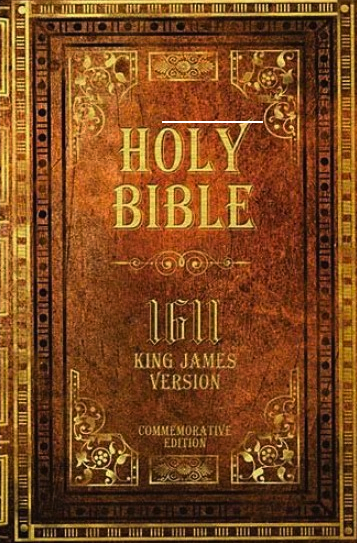
“It is the most beautiful of all translations of the Bible; indeed it is probably the most beautiful piece of writing in all the literature of the world.”—H. L. Mencken[10]
“The translation was extraordinarily well done because to the translators what they were translating was not merely a curious collection of ancient books written by different authors in different stages of culture, but the Word of God divinely revealed through His chosen and expressly inspired scribes. In this conviction they carried out their work with boundless reverence and care and achieved a beautifully artistic result.”—George Bernard Shaw[11]
"It is written in the noblest and purest English, and abounds in exquisite beauties of mere literary form."—Aldous Huxley[12]
One can also simply read the preface of almost any translation of the Bible in English and read acknowledgements of the King James Version’s beauty.
So one might ask why it is that King James Version is almost universally acknowledged to be a beautiful translation, and yet no other translation has been able to produce a translation that comes close to it? I think there are two primary reasons for this:
1. The scholars that translated the King James Version lived at a time when scholars were still expected to be masters of all learning, and so these scholars were not only the brightest minds of their day in terms of the original texts and ancient translations of the Scriptures, but they were also masters of their own language. In our time, one might find a scholar who is a master of one area or the other, but it is very rare to encounter a scholar who is a scholar of both Scripture and English literature.
2. As the goal of the King James Version was to produce a translation that was appointed to be read aloud in Church, its translators paid particular attention to how the text would sound when read aloud. They were of course concerned with producing an accurate translation, but they were also concerned with producing a reverent and beautiful translation that was pleasing to the ear.[13]
Now it must be conceded that the King James Version has some significant problems in terms of its liturgical use today. There are passages in the KJV that are hard to understand for most contemporary English speakers, and there are passages that are even misleading now, due to changes in the meaning of certain words over time. This being the case, there is in fact a need for some revision to the text, and there are editions of the King James Version that make such revisions, but the question is how much of the text needs to be revised, and on that there is not unanimity.
5. Neutered Translations
In recent decades we have been confronted with the new phenomenon of political correctness, and this has resulted in new versions of the Bible that have attempted to neuter the English text to accommodate the concerns of radical feminists. This is silly for several reasons. For one, radical feminists are not likely to be happy with any translation of the Scriptures no matter how neutered the English in it might be. Secondly, the very idea that gender distinctions in a language are at all to blame for any grievances that feminists might have is ridiculous on the face of it.
Only those who are completely ignorant of how languages other than English function could believe that gender distinctions are the cause of the ill-treatment of women, or that removing such distinctions would in any way improve the status of women. There are in fact two major languages that have no gender distinctions at all, and so the two cultures associated with these languages should have been feminist utopias throughout human history. The two languages I refer to are Turkish and Chinese. However, I think one could easily defend the argument that women in European cultures have been treated significantly better in the past two thousand years, despite them having to suffer the indignities of being “forced” to use languages that make gender distinctions. In fact, I think one would be hard pressed to find two literate cultures in which woman have historically been treated worse than that of the Turks and the Chinese—and I say that as one who otherwise loves Chinese culture, but the way women were (and to a large extent, still are) treated is not the high point of Chinese civilization.
These neutered versions of the Bible have a problem with the words “man” and “mankind” and so replace them with “person, “human,” and “humankind.” However, it should be noted that the words “human” and “humankind” have the offending word “man” in them. One might also point out that the word “woman” also has this offending word. Anyone who understands English should know that when we speak of God’s love for man, we are including both the male and female members of this species. These translations are so averse to the use of the term “man” that they have to distort the meaning of the text to avoid using it. For example, in the NRSV we have St. Peter telling Cornelius that he too is a mortal, when the word in Greek is “anthropos” (“man”), which is a term that does not focus on life expectancy. The NRSV also removes the very important messianic phrase “Son of Man” from the entire Old Testament (this being an exceptionally offensive phrase, having two gender distinctions it as it does). And so when we read Daniel 7:13, in the NRSV, we find:
As I watched in the night visions, I saw one like a human being coming with the clouds of heaven. And he came to the Ancient One and was presented before him.
This totally disconnects Christ’s use of the phrase “Son of Man” from this prophecy. Fortunately we are spared readings such as Foxes have holes, and birds of the air have nests; but the Human has nowhere to lay his head (Matthew 8.20), or Who do people say that I the Human am? (Matthew 16:13), but all of the prophetic significance of this term is sacrificed on the altar of feminism.
These neutered translations also are forced to insert words that do not exist in the original text, to omit words that do, and to change singular pronouns into plural to avoid words with gender distinctions. The result is simply a translation that misleads the reader and obscures the meaning of the inspired text … and it is all just so silly.[14]
Versions that contain more or less neutered English include the New Revised Standard Version (NRSV), Today’s New International Version (TNIV), the New Living Translation (NLT), The Good News Translation (GNT or GNB), the New Century Version (NCV), the Contemporary English Version (CEV), the New American Bible (NAB), the Revised English Bible (REB), and the New Jerusalem Bible (NJB).
Recommendations
So in the light of all that has been said, which translation of the Scriptures should we use? Unfortunately, there is not a simple answer for English speakers at present. I will address the question first in terms of the best options available for personal use, then the best options for liturgical use, and say a few words about how one can make use of the various translations available in their personal study of the Bible.
Options for Personal Use:
A. The King James Version
Generally speaking, the King James Version is where all English translations of Scripture should begin … and it remains one of the best options available, even without any revision. The pronouns and verbal forms that it uses are not hard to learn. The primary problem with it is the occasional translation that needs to be corrected, and the occasional word that is likely to confuse most contemporary readers. Most readers could easily remedy the second problem by simply expanding their vocabulary by about 200 or so words.
The best editions of the KJV available currently are the King James Version with Apocrypha - 400th Anniversary Edition, published by the American Bible Society, and the New Cambridge Paragraph Bible with Apocrypha, both of which has modern spelling, punctuation, and formatting, and includes the Deuterocanonical books.

B. The New Authorized Version
The New Authorized Version (NAV), which has been published without the Deuterocanonical books as the 21st Century King James Version and as the Third Millenium Bible with them included, has much to recommend it. Many of the obscure portions of the KJV have been revised to make them clearer. My primary complaints with this version are that they occasionally embed margin notes into the text with brackets, which is likely to confuse most readers that they are reading the text of Scripture rather than a margin note, and also that they did not revise many words or phrases that needed revision, but revised many more words that didn’t … and frankly, the only real purpose that most of these changes seem to have accomplished is that they enabled the publisher to copyright the text (which they would not have been able to do had they made fewer changes). For example, the publisher has removed the word “spake” and replaced it with “spoke,” but does anyone really think that the average reader had a problem figuring out what “spake” meant?
If we take another look at John 1:14-17, we find the following differences between the King James and the NAV:
KJV: And the Word was made flesh, and dwelt among us, (and we beheld his glory, the glory as of the only begotten of the Father,) full of grace and truth. John bare witness of him, and cried, saying, This was he of whom I spake, He that cometh after me is preferred before me: for he was before me. And of his fullness have all we received, and grace for grace. For the law was given by Moses, but grace and truth came by Jesus Christ.
NAV: And the Word was made flesh, and dwelt among us (and we beheld His glory, the glory as of the only Begotten of the Father), full of grace and truth. John bore witness of Him and cried, saying, “This was He of whom I spoke, ‘He that cometh after me is preferred before me, for He was before me.’” And of His fullness have we all received, and grace for grace. For the law was given by Moses, but grace and truth came by Jesus Christ.
In my opinion, such changes are not an improvement of the text. Nevertheless, elsewhere the NAV does remove the most common linguistic stumbling blocks that trip up the average reader. Some words in the King James Version now mean something else entirely. For example, the word "convince" in the KJV meant "convict;" "prevent" meant "precede;" and "conversation" meant "manner of living.” And so if we take a look at Psalm 21:3, we can see where the NAV has improved the text for the contemporary reader:
KJV: For thou preventest him with the blessings of goodness: thou settest a crown of pure gold on his head.
NAV: For Thou goest before him with the blessings of goodness; Thou settest a crown of pure gold on his head.
Most contemporary readers would not have come away from the text in the KJV with a correct understanding of the text, whereas here the revision of one word has made all the difference. Also the use of modern punctuation and formatting is far easier on the eyes than most King James texts that are on the market.
C. The New King James Version
The New King James Version uses contemporary English which is seen by many as a great advantage but which I personally find to be the greatest drawback of this version. I believe that traditional English is better suited for liturgical use, and I also believe that ideally we should use the same translation for worship that we do in private study, because this helps us better memorize the text and allows the words to better take root in our souls. This is of course a different subject which is beyond the scope of this article, and so I will simply concede that many other Orthodox would not agree and would find the language of the New King James entirely compatible with the style of English they use liturgically.
In any case, the New King James has its advantages. It generally corrects the translational errors of the King James Version, though is based on the Received Text of the New Testament and so is entirely consistent with the textual tradition of the Church. It also has perhaps the best textual footnotes of any translation in English. It is, of course, more easily understood than the KJV.

I must say that the Douay Rheims is not a version I have or probably ever will use a primary translation for personal study, although I know many Orthodox who do. The text is certainly acceptable, and has the advantage of using traditional English, and having the Deuterocanonical books. It is at times awkward, and it uses terminology that is unfamiliar to most English speakers. It is a version worthy of consultation, when comparing various translations.
E. The Orthodox Study Bible
As mentioned previously, the Orthodox Study Bible is an imperfect but good option for personal study. It uses the New King James Version of the New Testament, and in the few instances in which one might wish that translation was corrected they noted the preferable translation in the footnotes. I suspect the publisher, who owns the copyright to the NKJV, probably had something to do with why they did not simply amend the text. In the Old Testament they revised the New King James Version based on the Septuagint and generally did so accurately.
Options for Liturgical Use
A. The Psalter
For a Liturgical Psalter there are three options that I would recommend for consideration:
1) "The Psalter According to the Seventy," published by Holy Transfiguration Monastery (also known as "The Boston Psalter"). This is far from a perfect translation, but I have found it to be a generally accurate translation, and it has the advantage of matching many of the most commonly used liturgical texts available in English (it is used in all of the publications of St. John of Kronstadt Press, Holy Transfiguration Monastery, and most of those published by Holy Trinity Monastery in Jordanville New York). The disadvantage of this text is that the word choice can at times be awkward. It is also available in a pocket-sized edition.
2). "A Psalter for Prayer," which is published by Holy Trinity Monastery, Jordanville, New York. The translation is based on the Coverdale Psalter which is what you would find in an older (traditional) edition of the Book of Common Prayer, but is corrected with the Septuagint. It also contains a great deal of instructional material and additional prayers found in Slavonic editions of the Psalter but not in the Boston Psalter or most other editions published in English to date. For example, it has prayers at the end of each kathisma, and it has instructions on how to read the Psalter over the dead, with the prayers that are said according to Slavic practice in conjunction with that. The quality of the printing is very high—the paper and binding are of similar quality to the Boston Psalter, but the cover looks better, the size is a bit larger, and it has two marker ribbons sewn into the binding. The translation is well done and beautiful, and I would say that it is worth having just for the additional material that it contains. The biggest disadvantage is that it presently is not used in very many liturgical texts, but that may change. I have found it to be sometimes less precise than the Boston Psalter when comparing the text to the Greek Septuagint, but I can't say that this is based on a thorough and detailed review of the entire text.
3). "The Psalter of the Prophet and King David with the Nine Biblical Odes," which is published by the Center for Traditionalists Orthodox Studies. This translation is based on the King James Version, but corrected by the Septuagint which is arguably better stylistically than the HTM Psalter, and for many, it will be more familiar to the text that they are familiar with, but like the Jordanville Psalter, it is not used in many liturgical texts, though it is used in texts published by the Center for Traditionalist Orthodox Studies.
B. The Gospel
The best option for a Gospel book that is formatted according to Slavic usage is from Holoviaks Church Supply. They publish a very fine edition which uses the King James Version. They currently offer this text only with a metallic cover. They have also recently published one that uses the New King James and for those who prefer the NKJV obviously this would be an excellent option.
A new option for those seeking a traditional English translation of the Gospels is the Gospel Lectionary published by the Center for Traditionalist Orthodox Studies. It is based on the King James Version but is formatted according to Byzantine usage—again, an advantage for those of that tradition, but a disadvantage to those who of the Slavic tradition. It does have a scriptural index in the back that will help those following Slavic practice to find the correct reading more easily than most Byzantine style Gospel books. This edition is very affordable, and the format of the Byzantine lectionary is actually very well suited for those who would like to have a Gospel book at home to read the daily readings.
C. The Epistle Lectionary, or Apostolos
The best option available at present for those following Slavic practice is the Apostol, published by St. Tikhon’s Seminary Press. The translation used is neither King James, Douay-Rheims, nor New King James, but a synthesis of the three. It retains the traditional pronouns (for the most part) and verb endings, but eliminates archaic words. At times one might have wished that they had kept more of the King James text than they did, but the text is more easily understandable than the unrevised King James text would have otherwise been.
For those following Byzantine practice the Epistle Lectionary, published by the Center for Traditionalists Orthodox Studies is a good option. Like the Gospel Lectionary they publish, this too is based on the King James text. One of its drawbacks is that it is published only in paper back at present. This has the advantage, however, of making it inexpensive enough for individuals to purchase a copy for home use. Another downside to this edition is that some of the “corrections” of the King James text in this edition are debatable. For example, in the KJV, 1 Corinthians 11:14 reads Doth not even nature itself teach you, that, if a man have long hair, it is a shame unto him? The CTOS edition emends this to read Doth not even nature itself teach you, that, if a man have flowing hair, it is a shame unto him? I understand the point that they are trying to make, and the translation is not completely indefensible, but no other translation translates it this way. If one wanted to bring out the nuance that they are trying to highlight it would probably have been better to have translated it as “wear long hair” rather than “have long hair” or “have flowing hair,” and also this really gets us beyond translation into the realm of commentary, and that is what commentaries and footnotes are for. And although emendations such as this are made, many instances in which the text of the King James is no longer easily understood and could easily be corrected by updating a word or two are unfortunately left unrevised. Nevertheless, on the balance, this edition is a good option—again, particularly for those wishing to follow the daily readings at home.
Using Various Translations in Personal Study
For those who have not studied the original languages of Scripture, and even for those who have, it is often helpful to compare various translations in order to gain a fuller appreciation for the possible range of meaning of a text. While I would not recommend the following translations for use as the primary translation an Orthodox Christian should use, for the reasons addressed above, these versions are useful for comparison:
1. The English Standard Version
2. The Revised Standard Version
3. The New Revised Standard Version
4. The New American Standard Bible
The RSV and NRSV are also especially useful because they contain the complete Orthodox canon of the Old Testament.
One of the advantages the internet affords is that we can compare numerous translations with a few clicks of a mouse without having to have hard copies of them all at home. For recommendations on electronic Bible Study tools, click here.
Conclusion
Some dismiss concerns about Biblical translations as unimportant, or a simple matter of taste. “To each his own,” and “Whatever floats your boat” are the sacred proverbs of our culture today. However, as Bishop Tikhon of San Francisco noted, “the word ‘Orthodox’ itself implies a certain care about correct syntactics, semantics and pragmatics, the correct use of language …”[15] Words mean things, accuracy matters, fidelity to the traditional understanding of the Scriptures is essential, and beauty in worship (and thus in our translation of the Scriptures, which is at the core of our worship) is something we must strive for.
As with most things in the Orthodox Church, there are boundaries of acceptability within which there is a certain amount of diversity of opinion that is completely acceptable, but outside of which there is spiritual danger that must be avoided. There may even be some disagreement about exactly where the lines should be drawn that mark those boundaries, but Orthodox Christians should be in agreement that translations that distort and obscure the meaning of the text, that strip the text of significant Christological and prophetic concepts, and lack a reverence for the words that the Holy Spirit has inspired His prophets and apostles to write are to be avoided.
The translation of the Sacred Scriptures should be approached with the utmost care and reverence—this should be obvious. The selection of a translation calls for care and reverence as well. Furthermore, the reading of that translation calls for all of that plus a great deal of diligence, as we read in the Psalter:
Set before me for a law, O LORD, the way of Thy statutes, and I will seek after it continually. Give me understanding, and I will search out Thy law, and I will keep it with my whole heart (Psalm 118:34-35 LXX).
As anyone who has invested the effort into the reverent study of the Scriptures can attest, the rewards are well worth the effort.

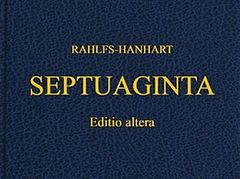


Also, how about the original Jerusalem Bible and original "The English Bible"?
Many thanks in advance.
Which bible version is better for devotional regular reading by a beginner Orthodox Christian? OSB or CEB with apocrypha?
The St. Athanasius Academy has made the valiant first attempt at an Old Testament translation, but it does not speak for all of English speaking Orthodoxy.
I think that I have at least 14 bibles and many translations. I use the KJV as the ultimate authority after the Church itself and I find The New Strong's Exhaustive Concordance of the Bible with Greek and Hebrew dictionaries by, (ISBN 0785250557), to be extremely helpful, and cost effective too.
I have been a bookseller for many years.
In Christ,
Tom
http://www.amazon.com/EOB-Orthodox-Testament-Patriarchal-extensive/dp/148191765X/ref=tmm_pap_swatch_0?_encoding=UTF8&qid=&sr=
forums.catholic.com/attachment.php?attachmentid=6734
Thank you